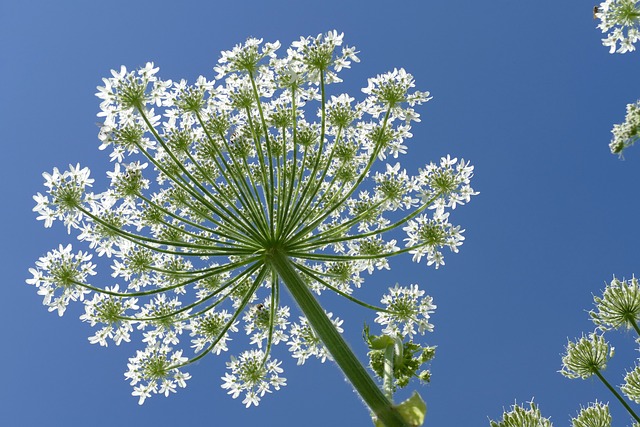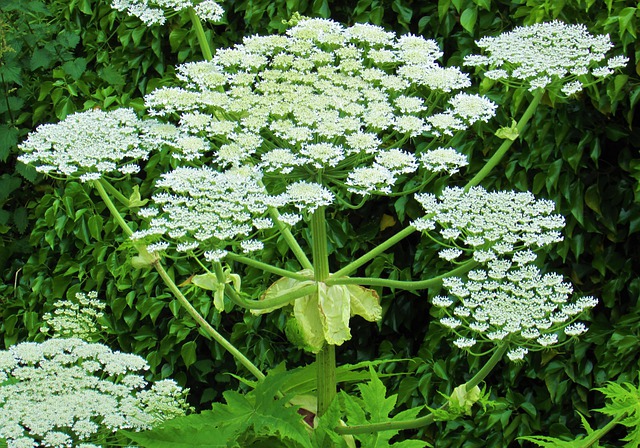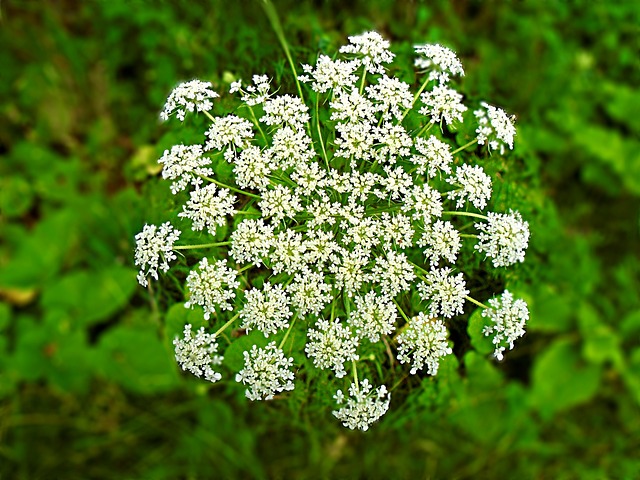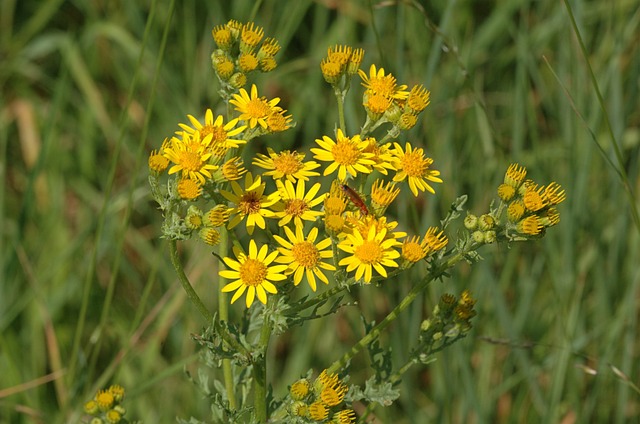
The UK is home to a fabulous variety of plants. Some are harmless, but some can have harmful effects on humans and animals alike. So, we’ve put together a guide to the more dangerous plants in the UK.
Japanese knotweed (Reynoutria japonica) is often touted as one of the most dangerous plants in the UK. Its rapid growth makes it a menace to other plants, and its root systems can cause structural problems. But Japanese knotweed will not put you in hospital if you eat it. It actually tastes similar to rhubarb, and there are plenty of recipes that use it.
However, a number of plants found in the UK are much more dangerous. Some may put you in hospital, and in some cases they could even be fatal. We can help you identify them and create appropriate control programmes if they appear on your property.
Giant Hogweed
Giant hogweed (Heracleum mantegazzianum) is a relative of cow parsley, introduced to the UK from the Caucasus Mountains in the early 1800s. If the sap makes contact with skin, it could result in photosensitivity, causing severe blistering. In some cases, the victim may require hospitalisation. This photosensitivity may well continue for years after the initial contact, requiring the person to keep covered up and protected from ultra violet light.

As a non-native species, giant hogweed has been classed as invasive, and its potentially-harmful effects mean its spread is being monitored.
READ MORE: Is Giant Hogweed Dangerous?
Hemlock
The hemlock plant (Conium maculatum) is one of the more dangerous plants in the UK. Every part of the plant, especially the seeds and roots, can be toxic to both humans and livestock if ingested. Hemlock is a native plant to the UK, but is classed as a weed because of the dangers it can present to humans and wildlife.

If not controlled, hemlock can quickly take over a large patch of ground. It particularly favours waterlogged soil and waste areas, so it's worth taking care if you’re strolling by a riverbank – poisoning may occur via skin contact or inhalation of pollen. We have also found hemlock in several gardens.
Hemlock Water-Dropwort
Hemlock water-dropwort (Oenanthe crocata) is possibly the most poisonous plant in the UK. It may be fatal to both humans and livestock from ingesting the stems, roots or leaves. Although hemlock water-dropwort is native to this country, it is arguably the most poisonous plant in the UK, so early control is important.
Much like hemlock, hemlock water-dropwort is unlikely to grow in your back garden: its main habitats include shallow fresh water streams, marshes, canals, ponds, and wet woodland. Because of this, it’s more likely to be a danger to animals than to humans.
Fool’s Parsley
Fool’s parsley (Aethusa cynapium) is a member of the same plant family as garden parsley (which you might see on a restaurant dish). But don’t eat this variety! It may make you quite ill, even though it is not lethally toxic.
Fool’s parsley grows in waste ground, fields, hedgerows, and in gardens, so if you come across it on your property, it’s best to dig it out completely and get rid of it, as it could be harmful to your pets.
Ragwort
One of the UK’s most famous poisonous plants, ragwort (Senecio jacobaea) may be toxic to livestock. Documented cases of ragwort poisoning are rare, and its bitter taste means most livestock creatures wouldn’t eat it – or at least that they wouldn’t eat enough of it to suffer too much from any toxic effects the plant may have. However, ragwort may still be toxic when dried, so livestock owners should be careful with hay bales. In places that offer only sparse grazing, it’s possible that animals could eat enough ragwort to suffer the potential ill effects.

Ragwort can be beneficial to insects in the UK, like the cinnabar moth, so it remains a contentious issue between conservationists and livestock owners. Cattle and horses are most susceptible to the potentially-toxic effects of ragwort, but because it is beneficial to insects, it is often allowed to flower without any intervention.
LEARN MORE: Ragwort in Horse Paddocks
*
If you have any questions or concerns about poisonous or harmful plants in the UK, get in touch and we will be more than happy to recommend a suitable weed control plan.
Free Knotweed Survey
